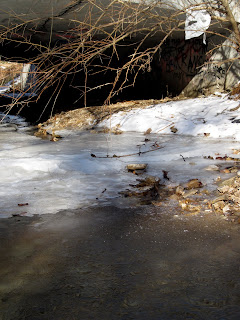
The Mississippi River provides drinking water for millions of people in the St. Louis region, critical habitat for 60% of all North American bird species, and recreational opportunities for regional, national, and international visitors.
The Mississippi River Flyway is one of our planet's most significant migratory routes, and its watershed covers two-thirds of the United States. The Mississippi River is truly an artery of our nation.
Our health is directly connected to the health of this great river.
As part of an overall effort to raise awareness of the environmental value of this great river, understand the complicated policy issues that surround it, and develop leadership skills required to address its future, the National Audubon Society has partnered with the National Great Rivers Research and Education Center, the Army Corps of Engineers, and Crossroads College Preparatory School to develop and implement the Rivervision Leadership Project.
The Rivervision Leadership Project exposes students to a wide variety of water stewardship and water management issues associated with the River. Programming is an engaging mix of hands-on experiential learning opportunities including components such as water monitoring, river clean-up, Lock and Dam tour and study, monitoring flora and fauna in both aquatic and wetland sites, a diverse speaker series, and canoe training and subsequent trip. Students will interact with environmental groups, the Corps of Engineers, the Metropolitan Sewer District, farm associations, the barge industry, and others local industry professionals and policy makers.
December 15 and 16 we hosted the first of many Rivervision field trips with 42 8th grade students and 31 7th grade students respectively.

In the morning students toured the Melvin Price Lock & Dam in Alton Illinois. We saw Bald Eagles, American Pelicans, and several Gull species feeding directly below us at the dam site, and got up close to the massive 15 barge tows that come through the Lock and Dam every day. The picture above shows a group ready to go up the massive elevators to the top of the dam…it was a blustery 11 degrees that day and we are bundled accordingly! After touring the Lock and Dam, we headed to the Riverlands Migratory Bird Sanctuary, soon to be home to the Audubon Center at Riverlands, for lunch and an afternoon hike.
As the cold, hungry group of 8th graders shuffled into the little Environmental Learning Facility (ELF) at Riverlands to enjoy a break and some lunch, we were bl

essed with an incredible sight…not 20 yards in front of us at the waters edge two adult eagles were fighting over their lunch, an injured duck. An adult male eagle snagged the duck and began aloft with his bounty. All was not well though as another adult male eagle struck the first causing him to lose his grip, the duck splashing below. The second male secured the duck in his own talons just as the first male returned for his duck, striking the other eagle mid-air. This exchange went back and forth several times before the first male eventually flew away with his hard won supper.
What a marvelous introduction to Ellis Bay in December!

After lunch we hit the trails, binoculars in tow, with US Army Corps of Engineers Wildlife Biologist Charlie Deutsch around Riverlands. While we were out we spotted more Bald Eagles, Trumpeter Swans, Canada Geese, a kestrel, several hawks, Mourning Doves, Dark-eyed Juncos, and managed to spook a few rabbits from their comfy spots.
The goal of the Rivervision Leadership Project is for students to understand the complexity of issues that surround stewardship of America’s great rivers; to understand how effective leadership can result in positive environmental change; and to hone their own leadership skills in thinking through the issues to arrive at potential working solutions.
With our first field trips behind us I think we are well on our way to a very good program! I am looking forward to supporting the students in their efforts, particularly as the seasons change in the coming months.



















